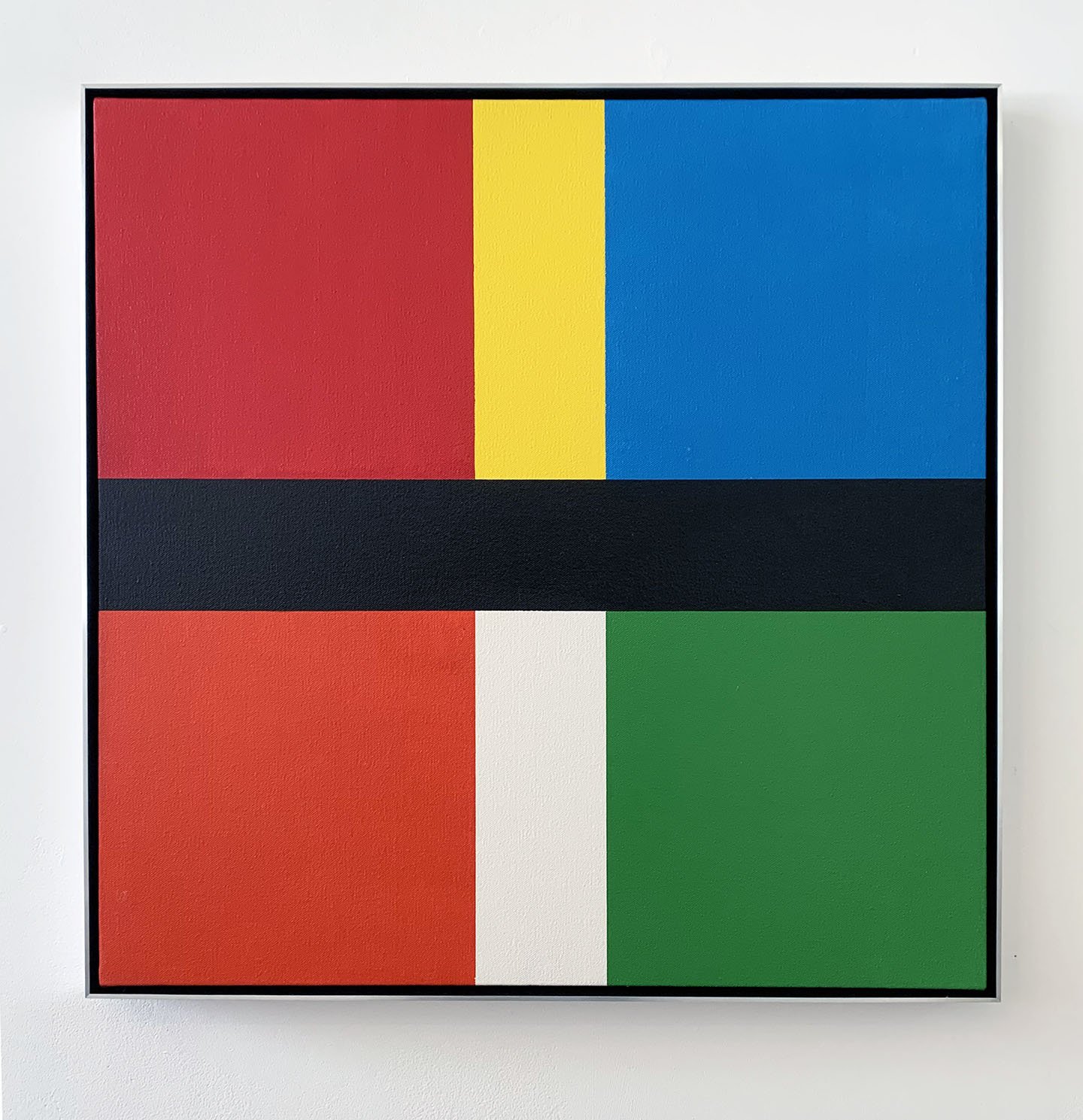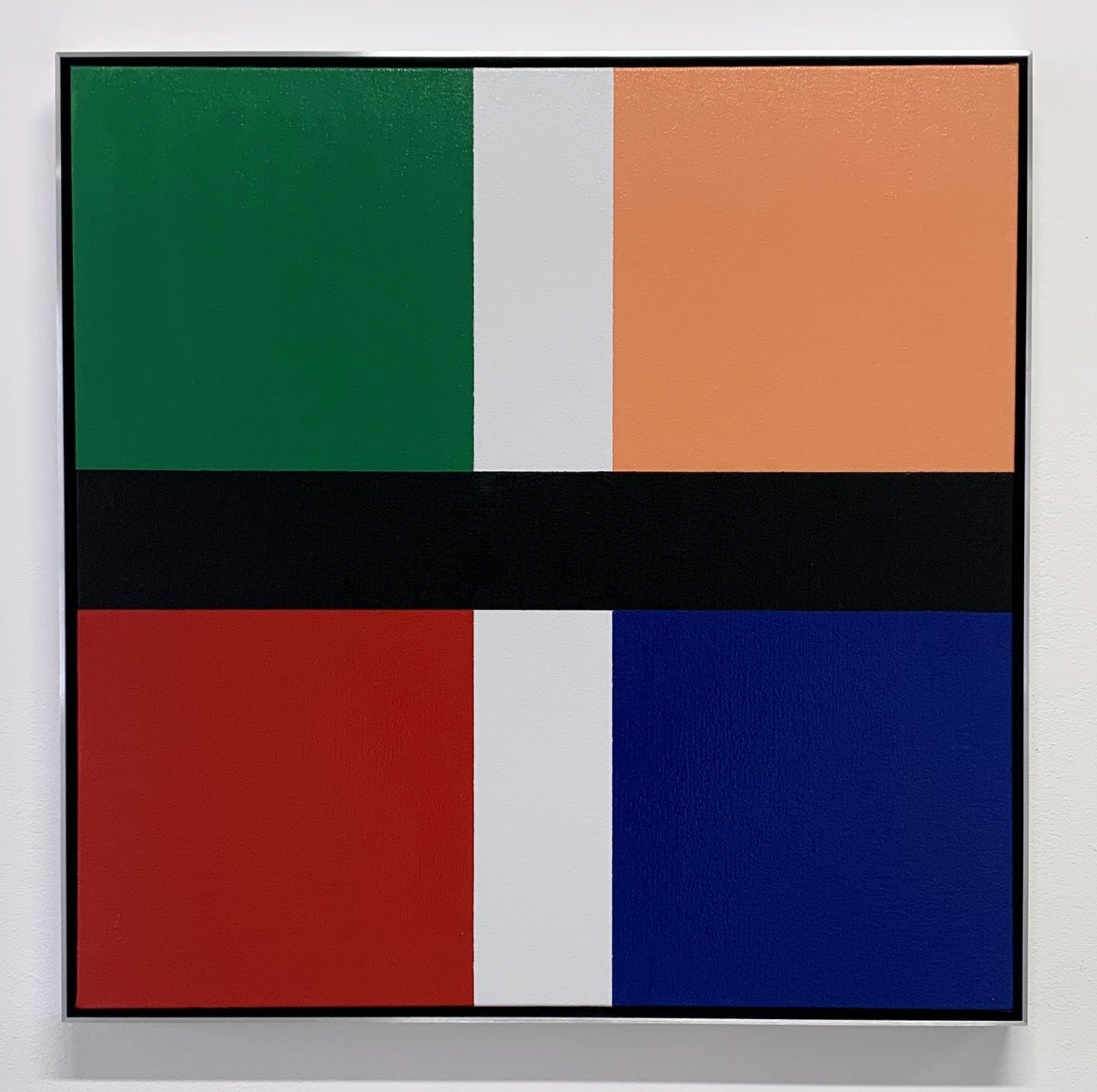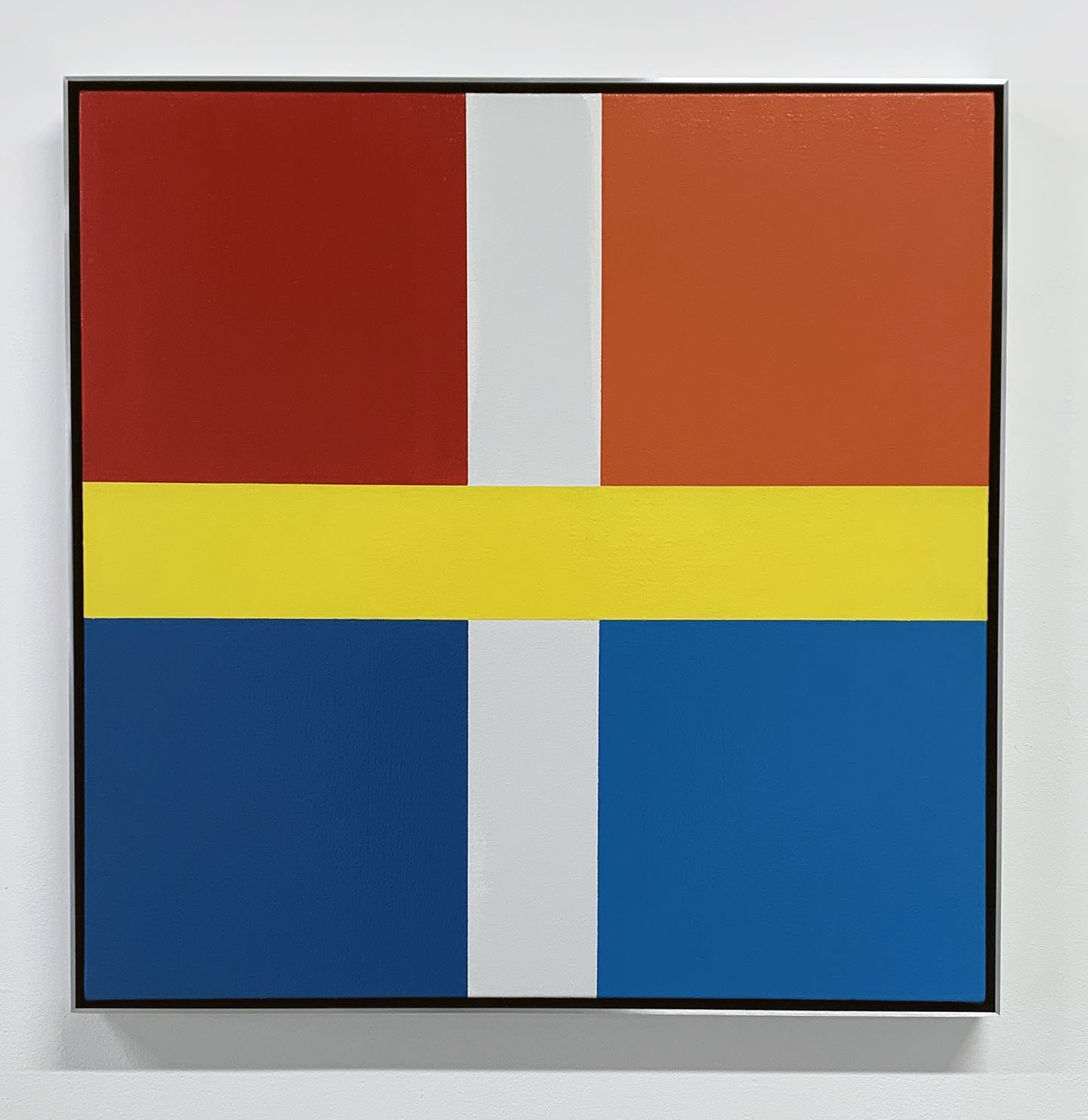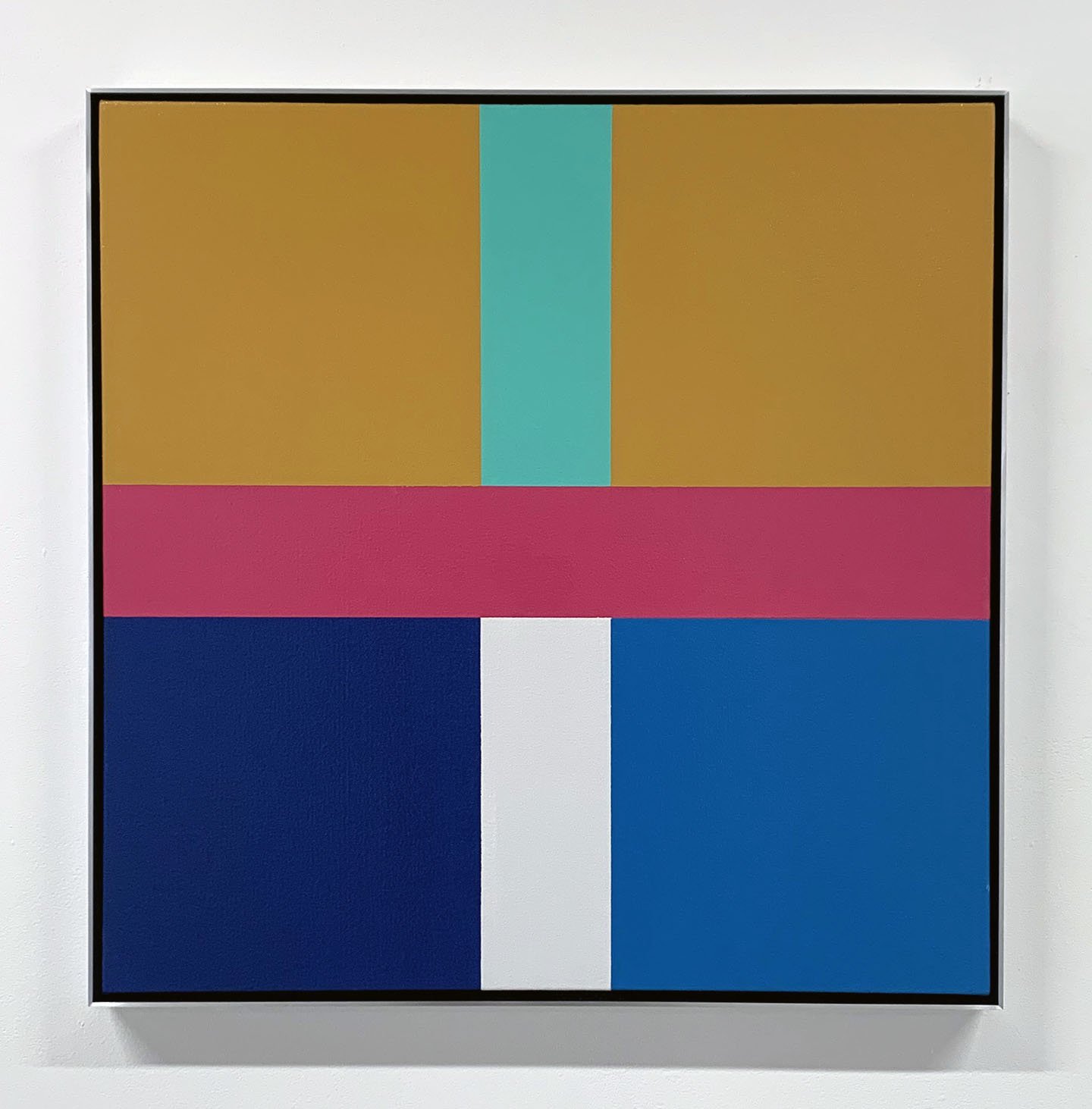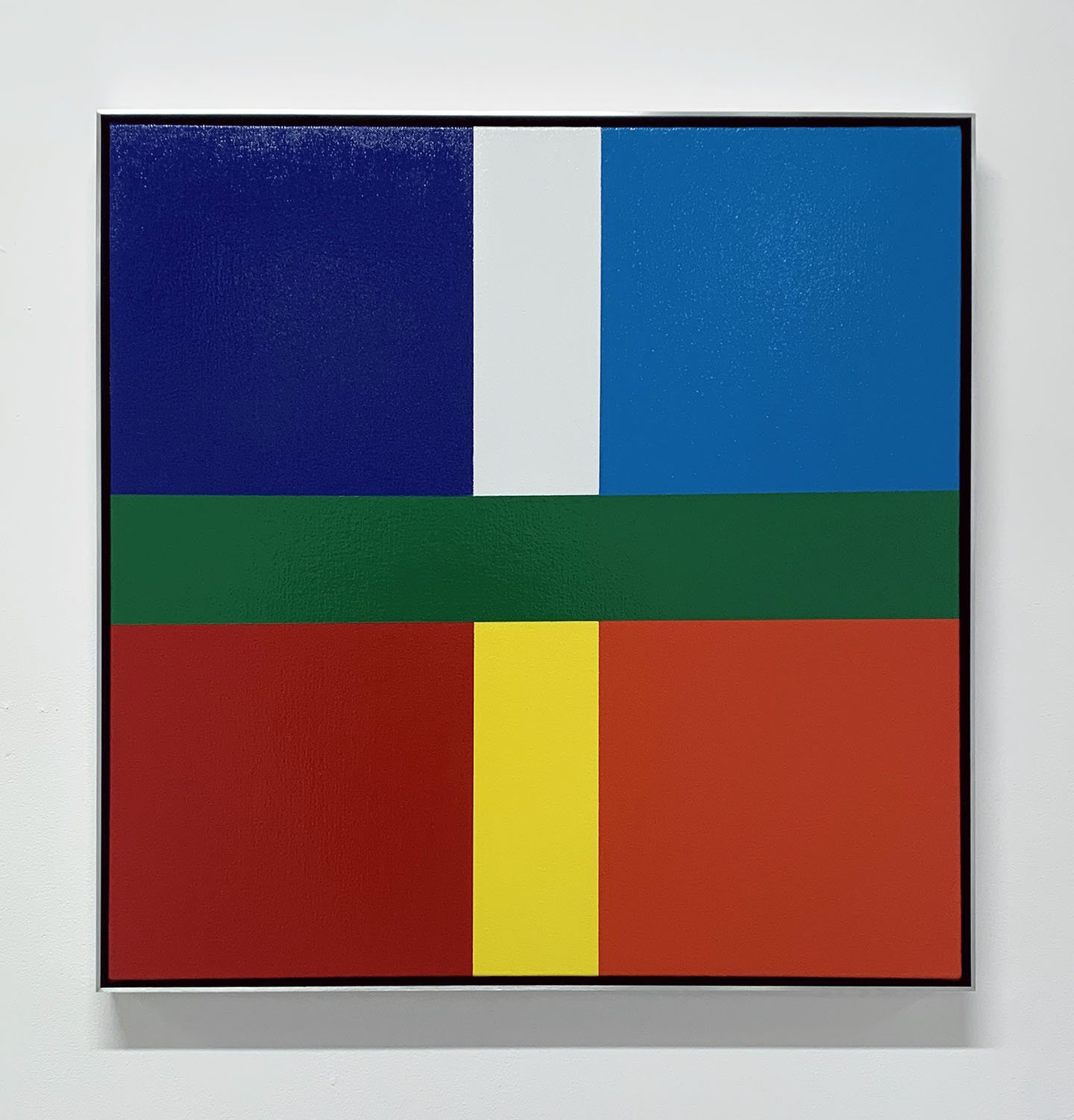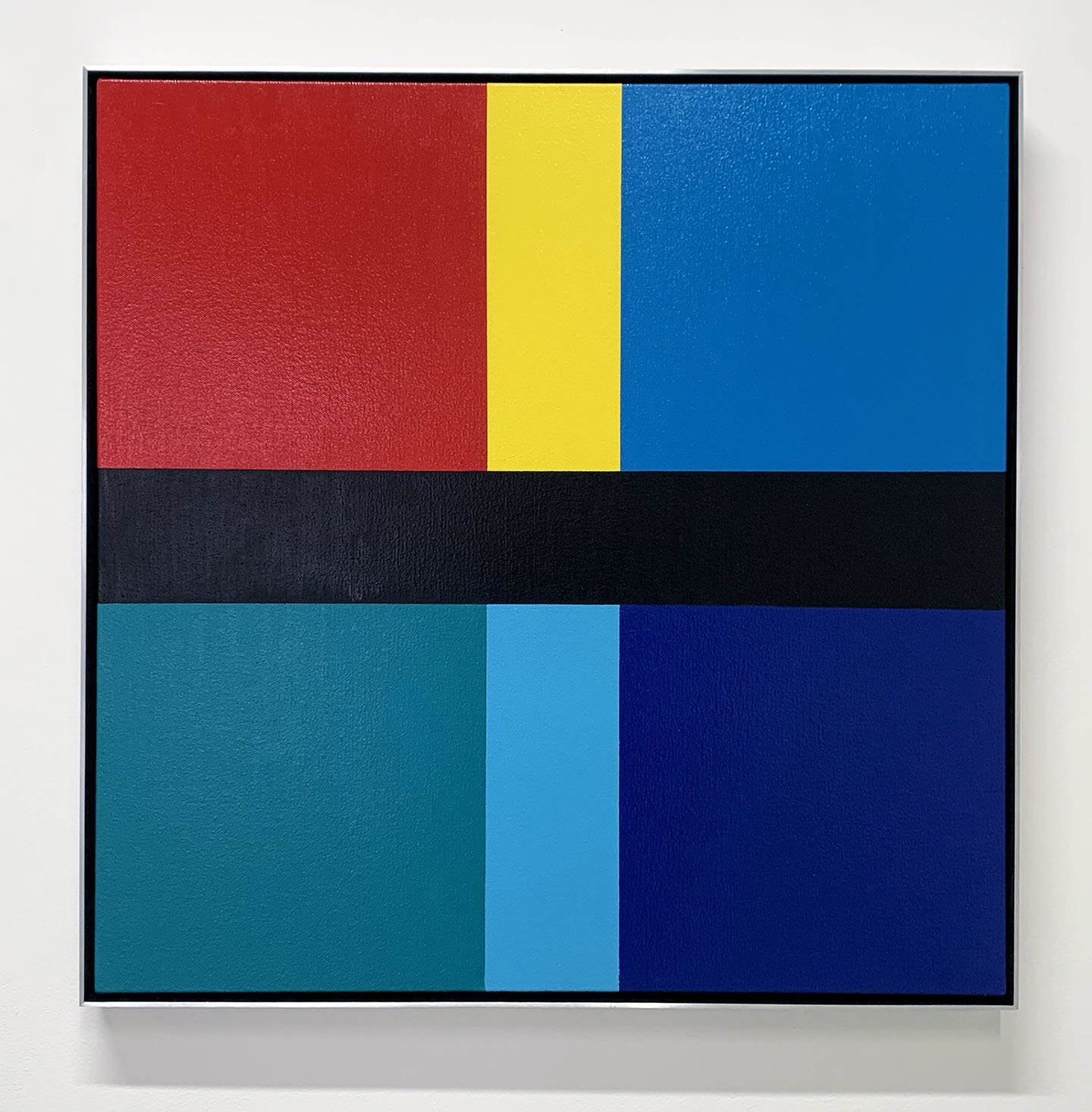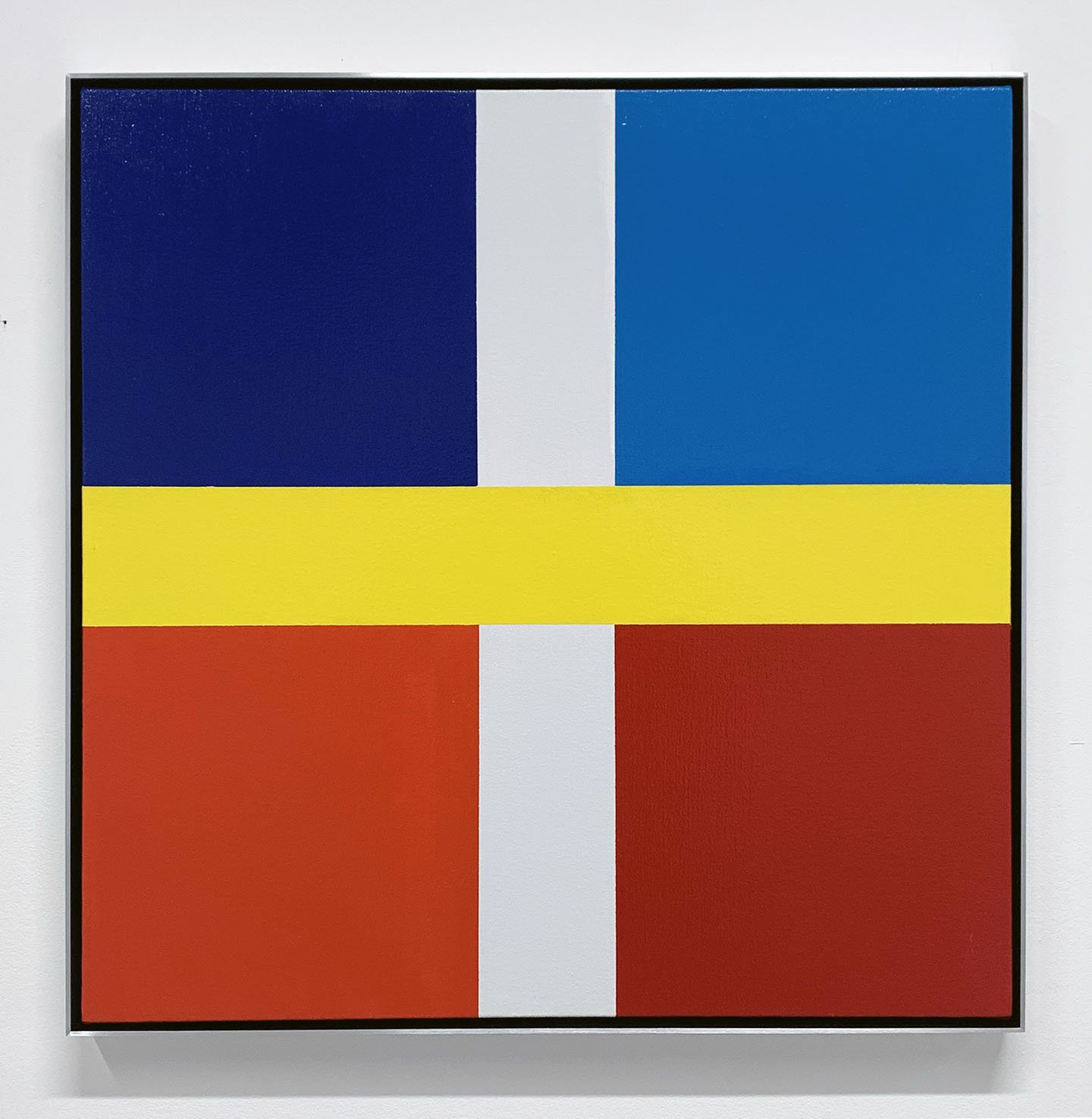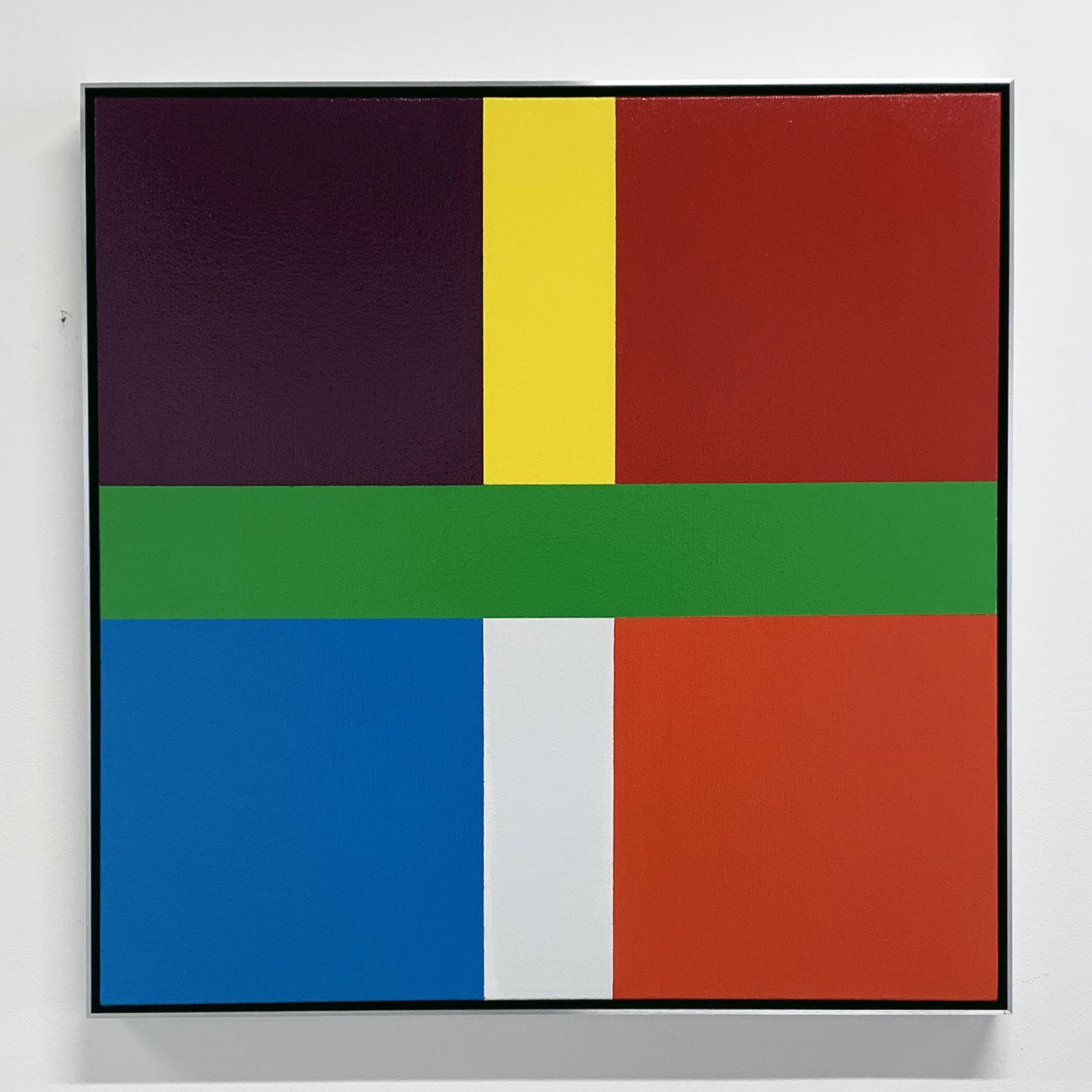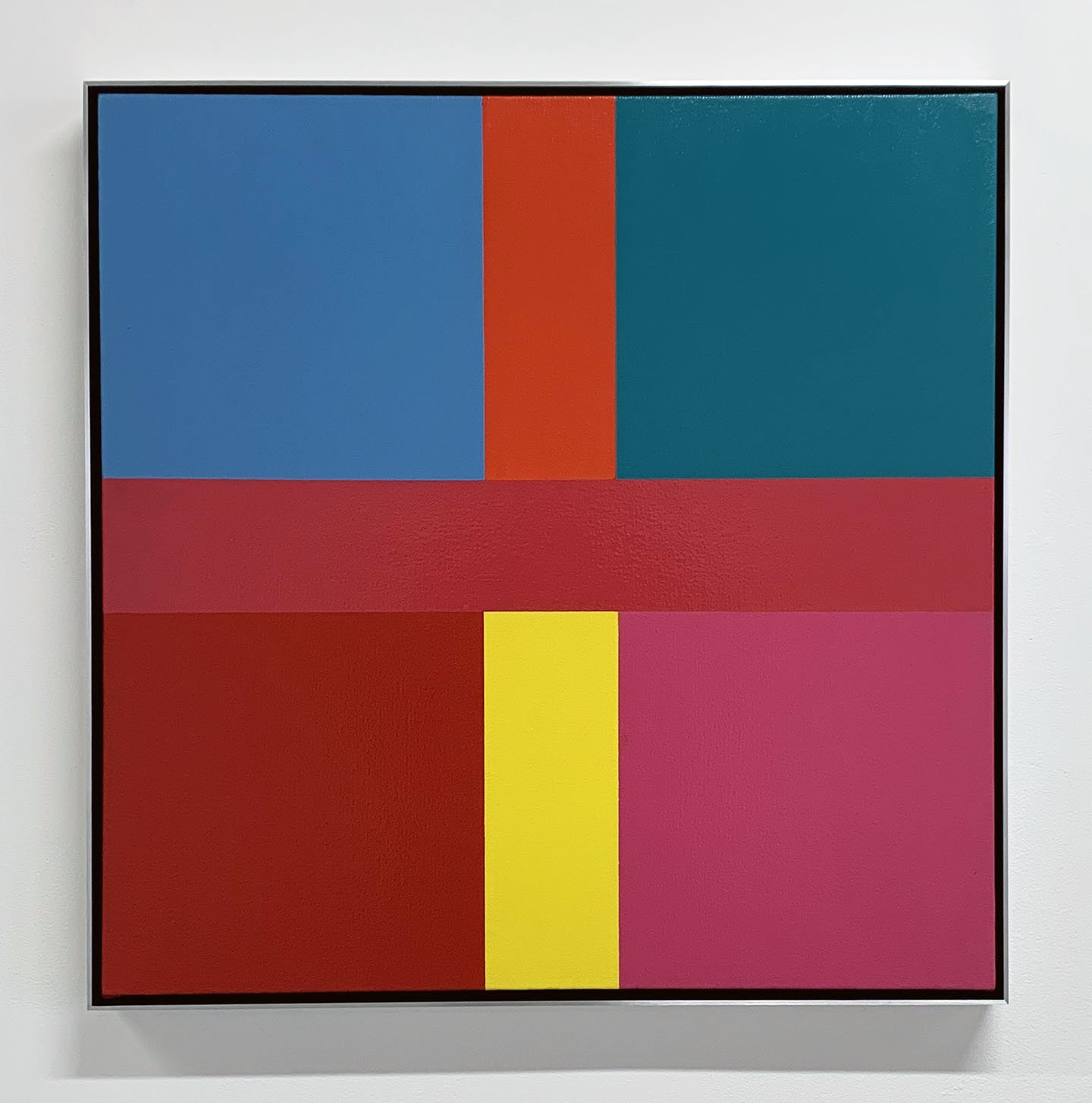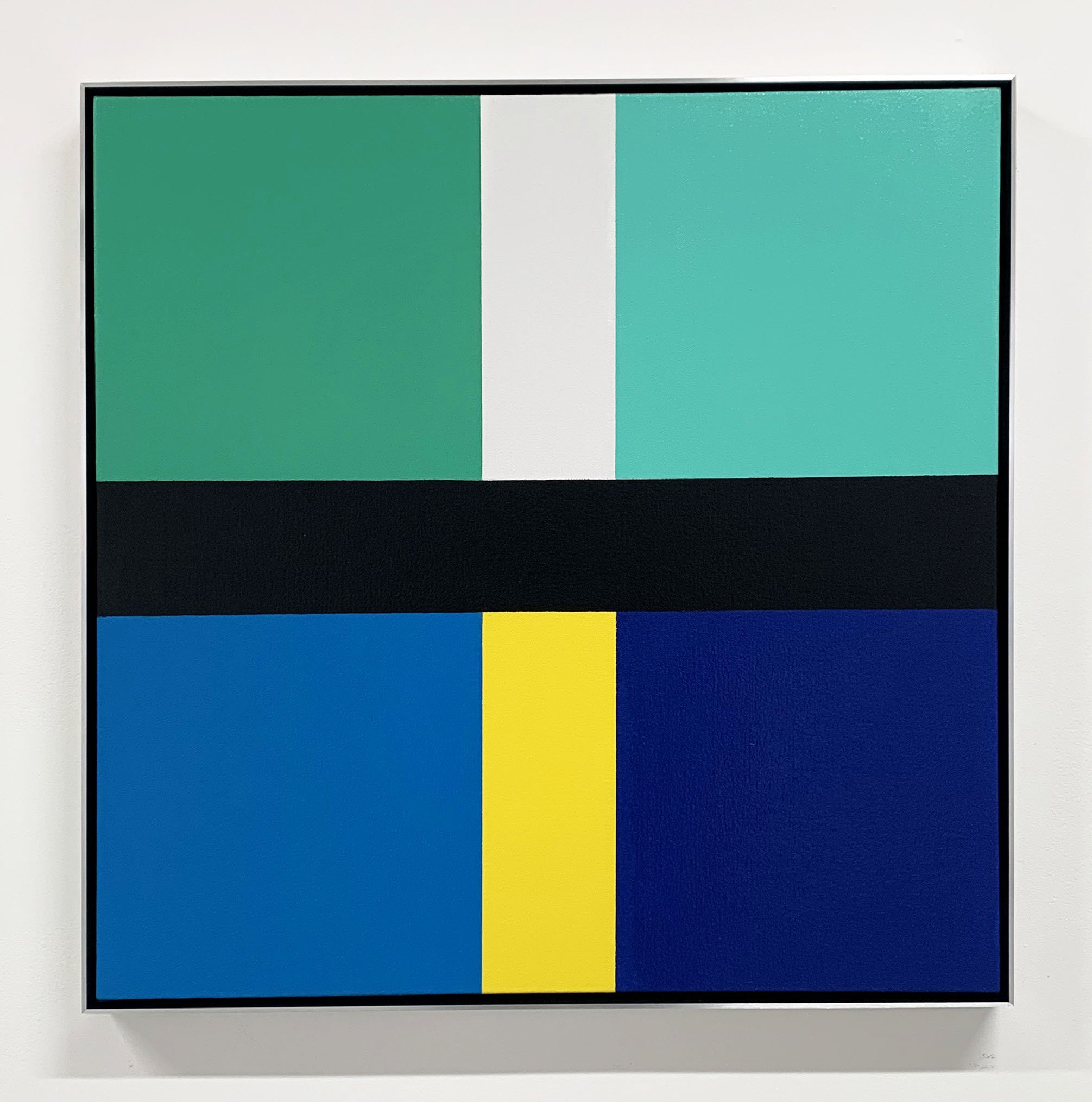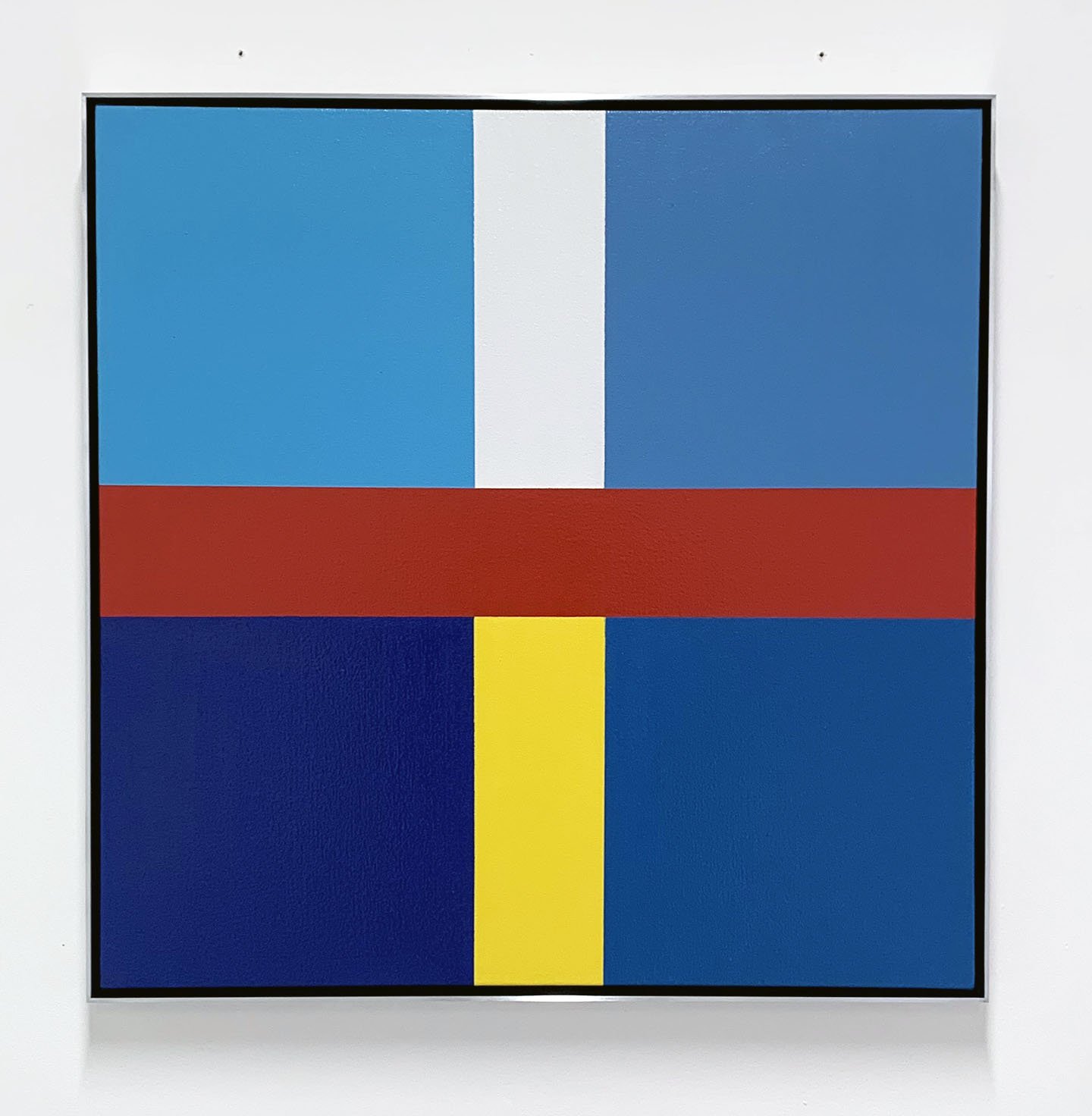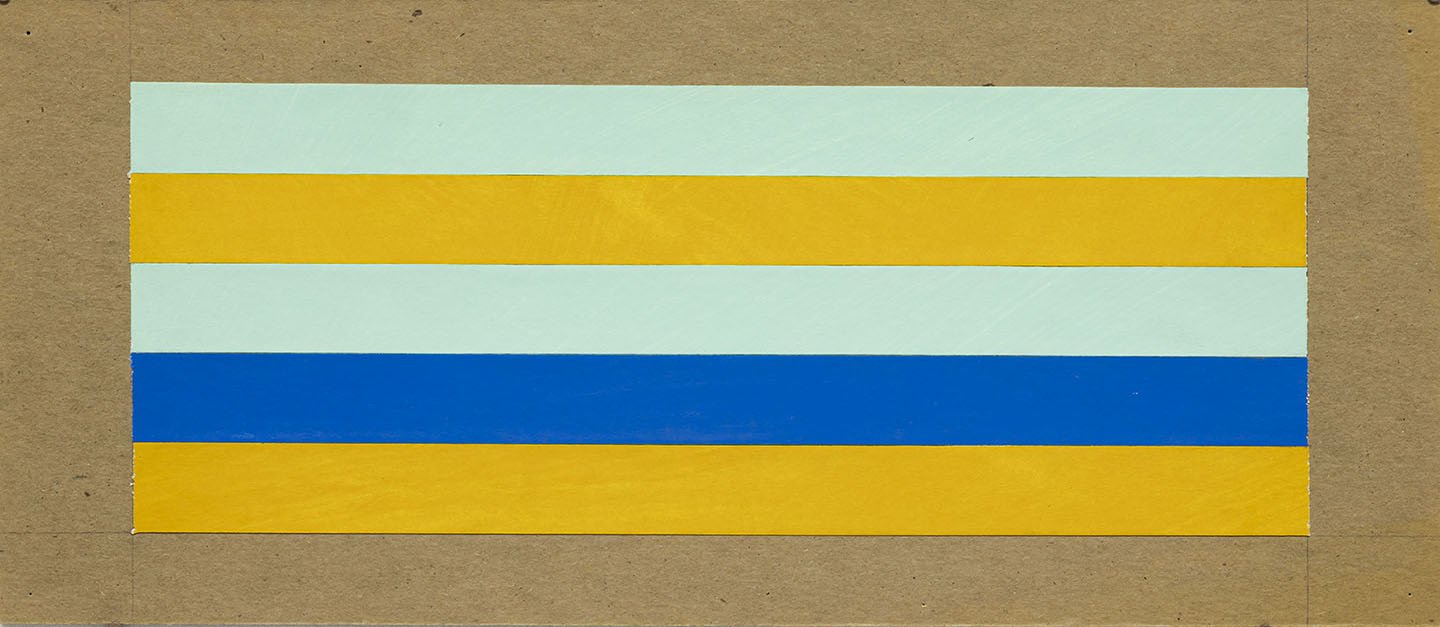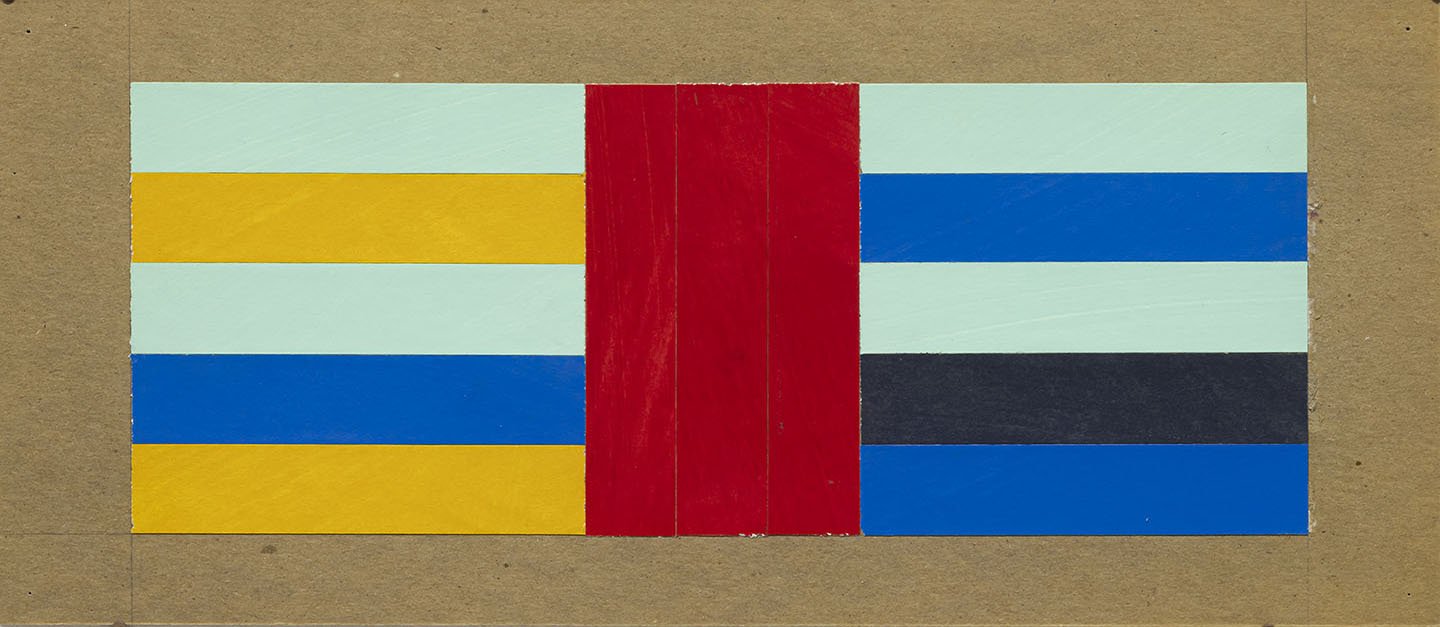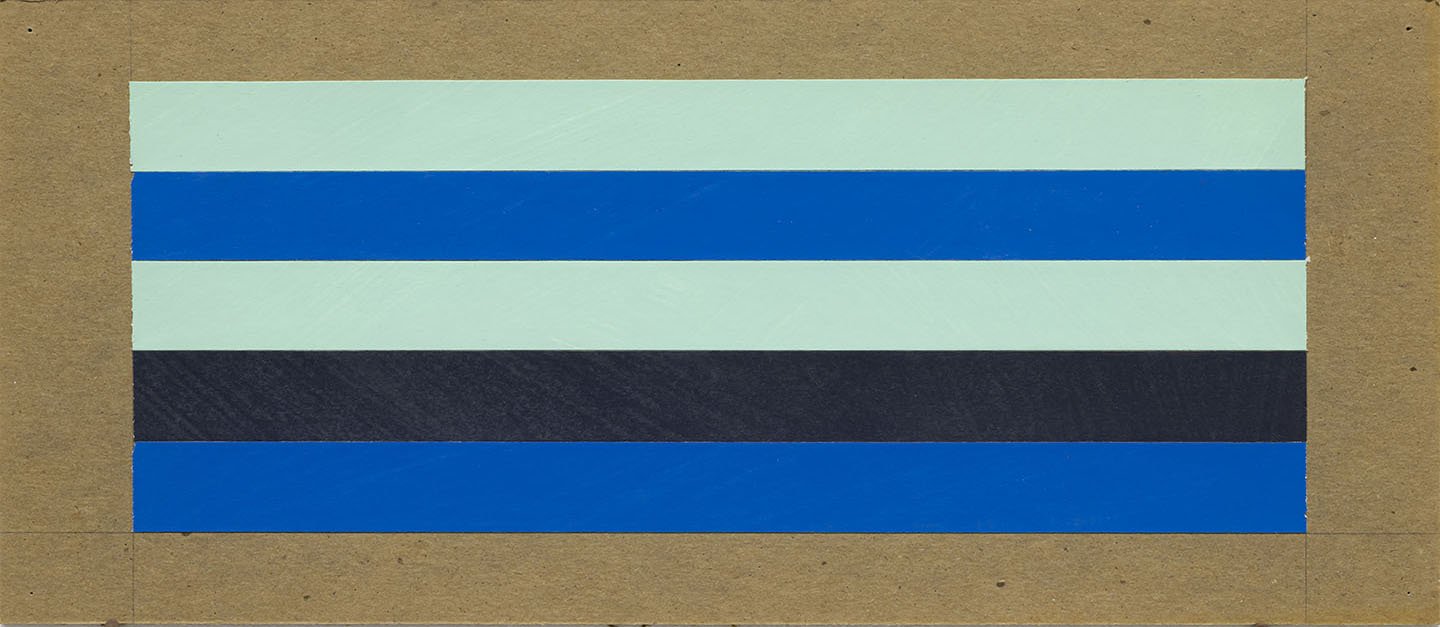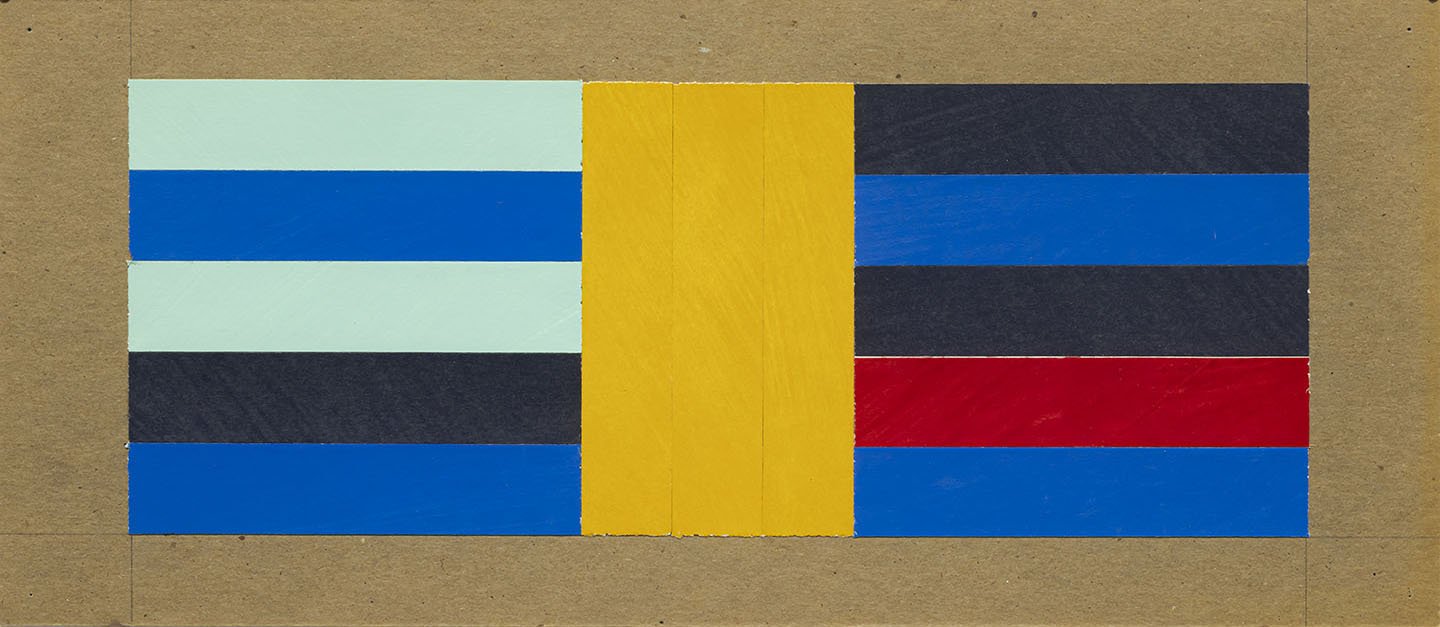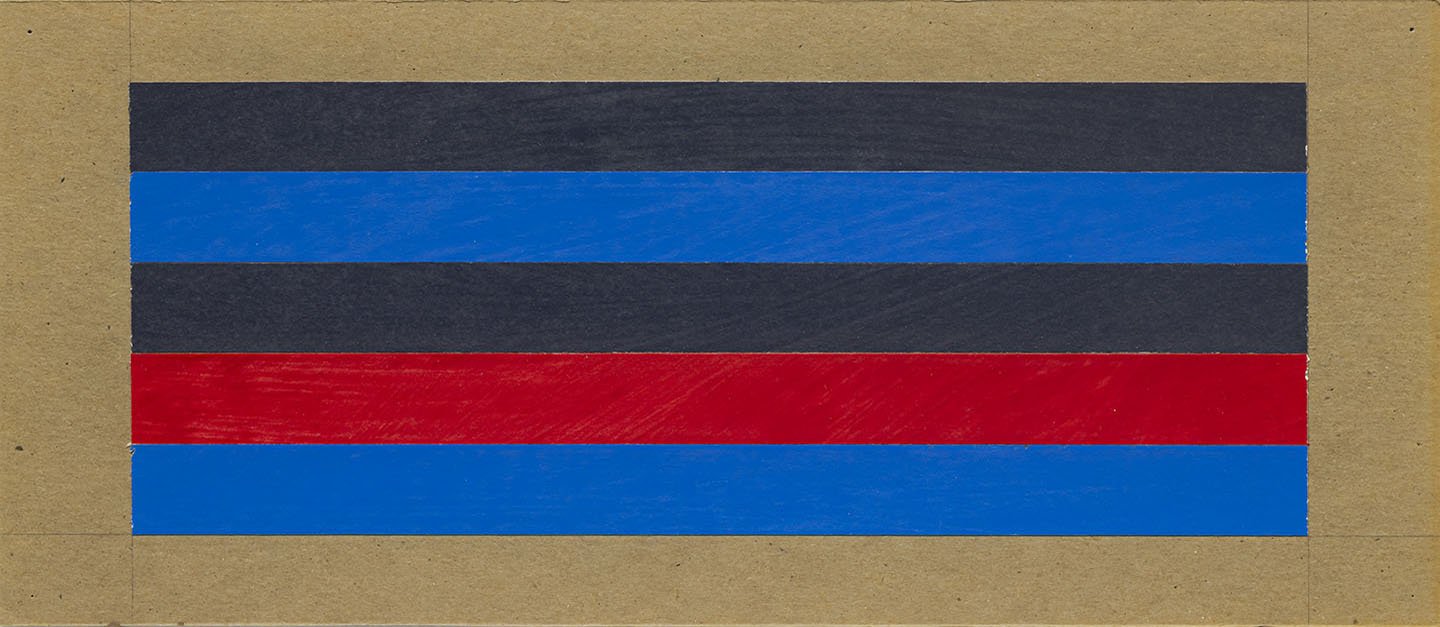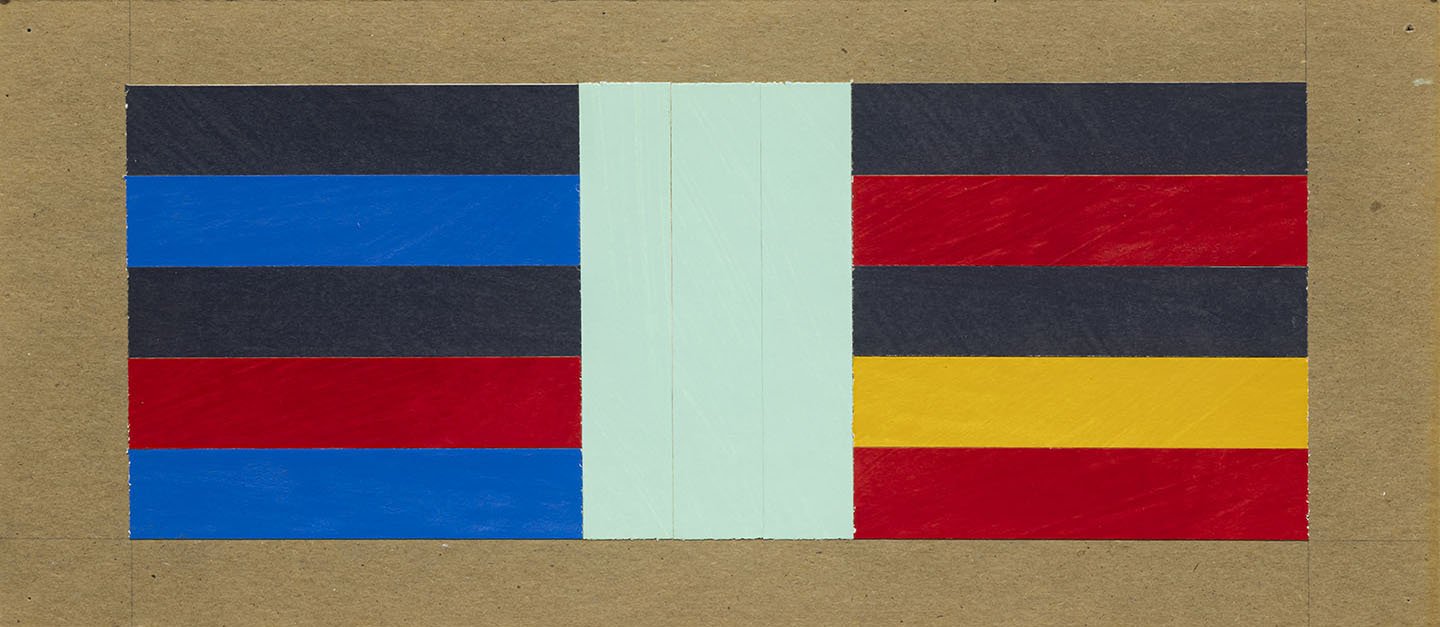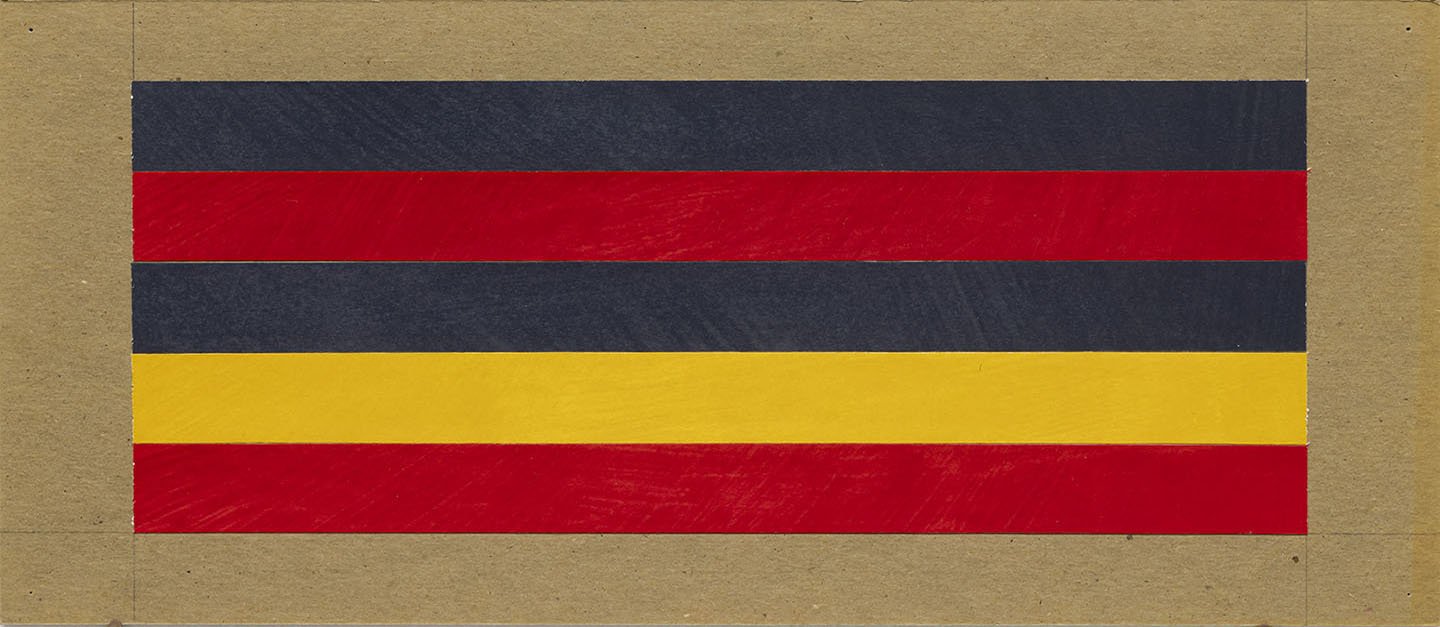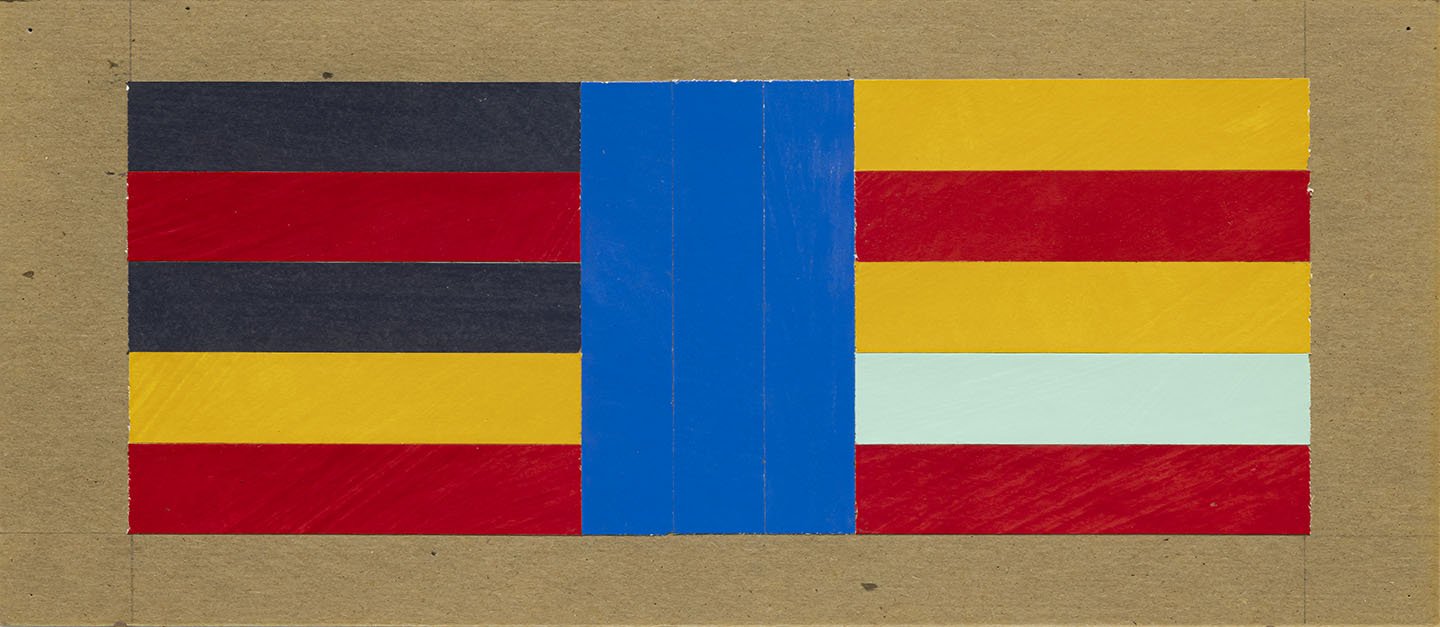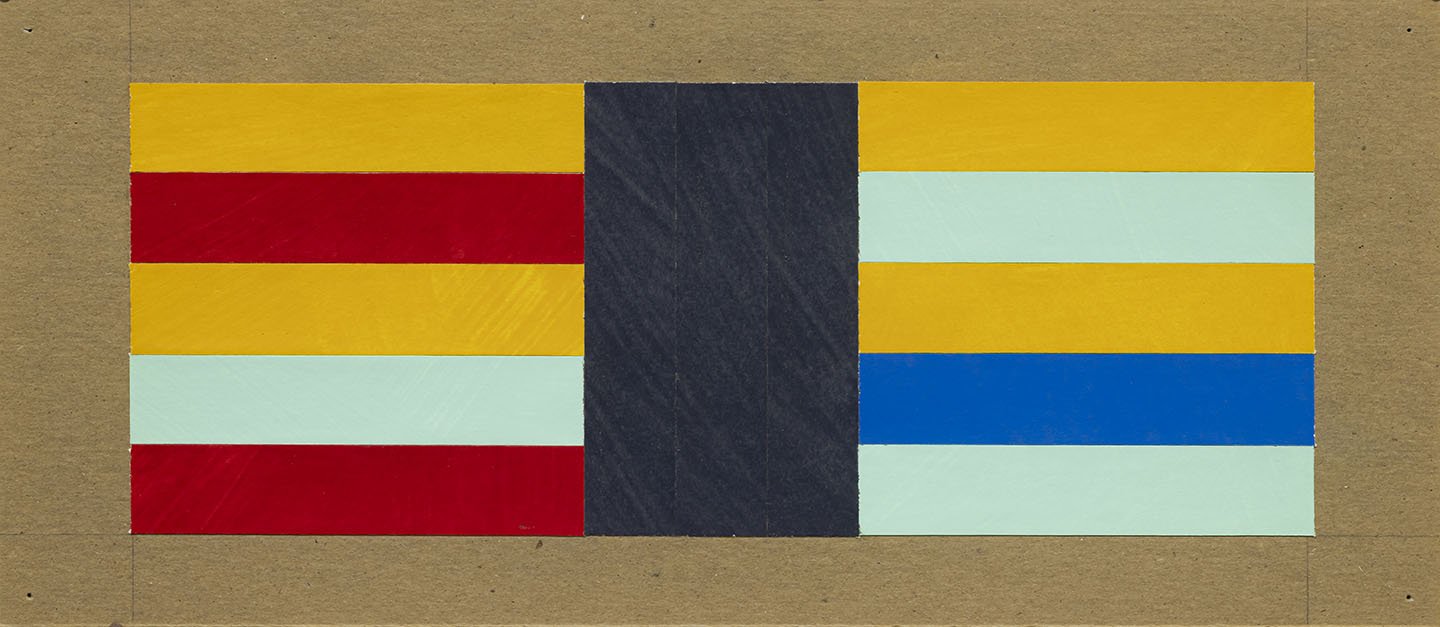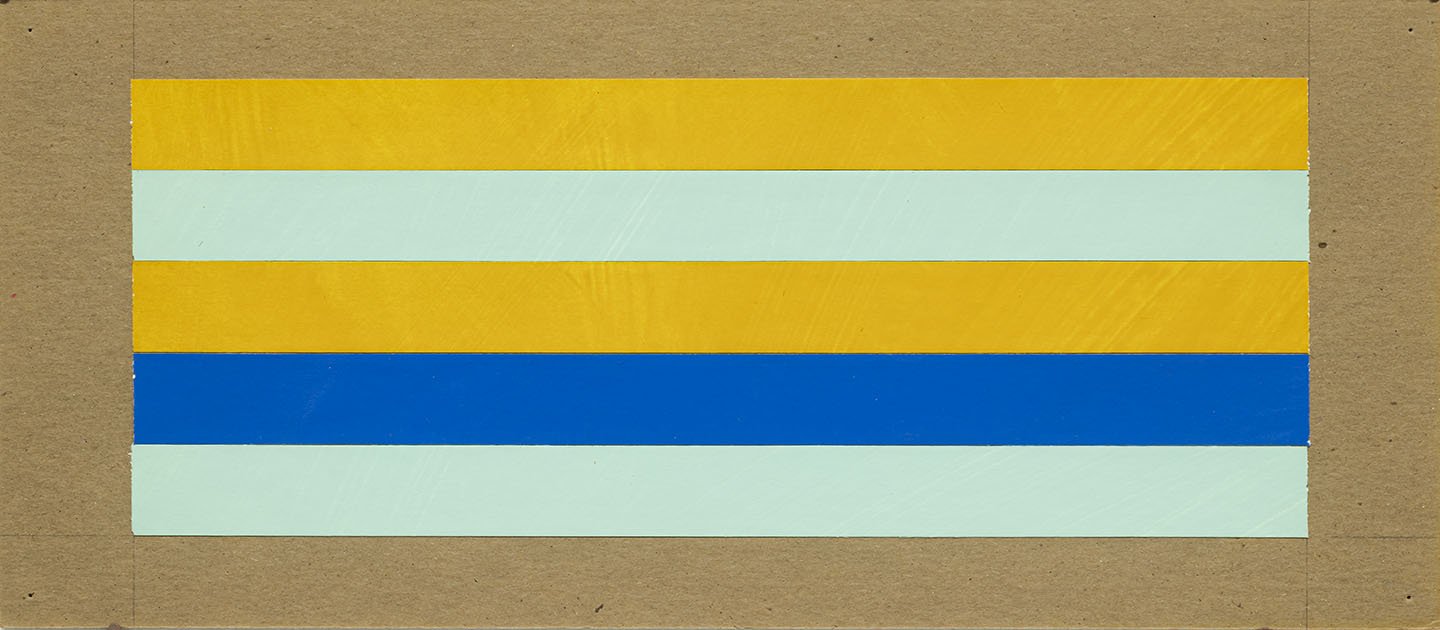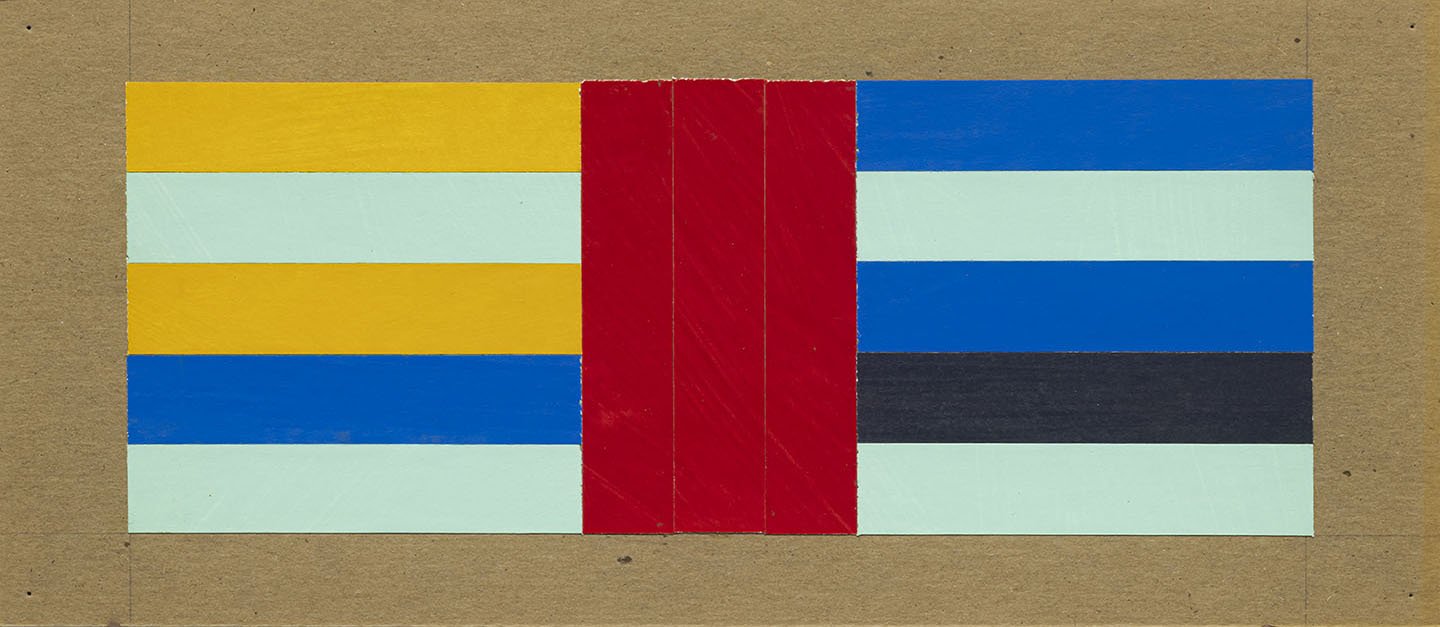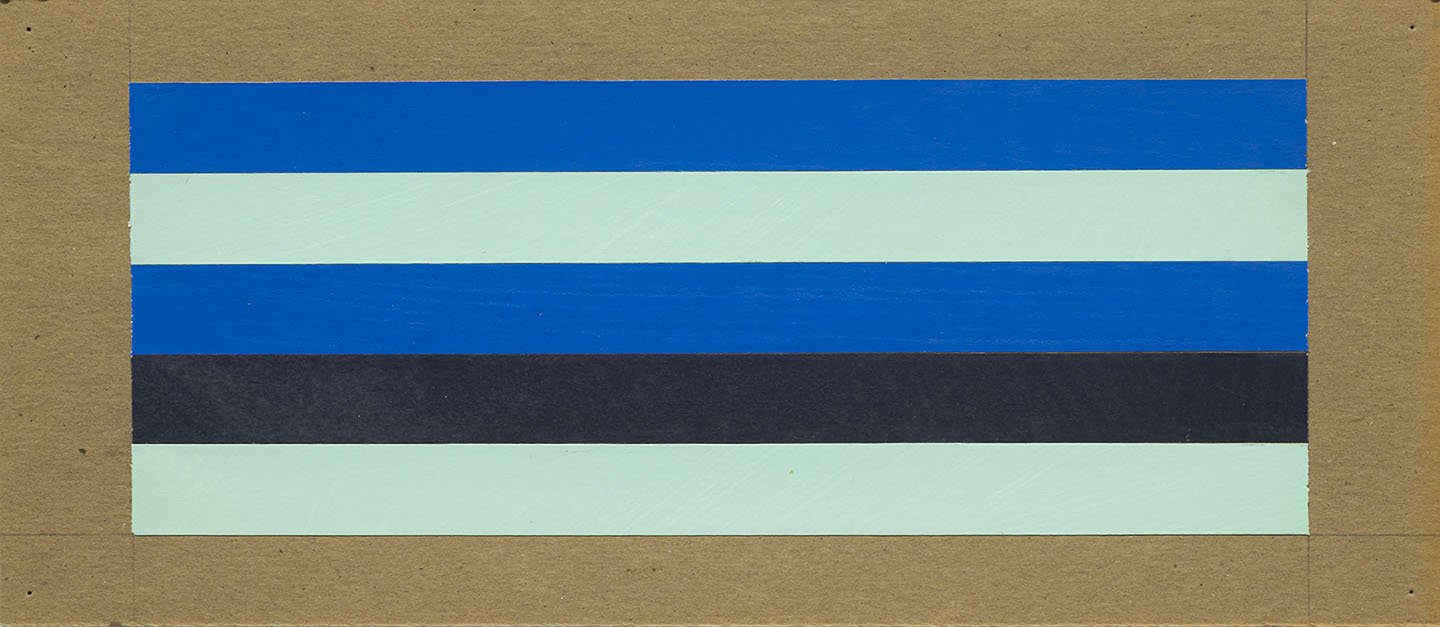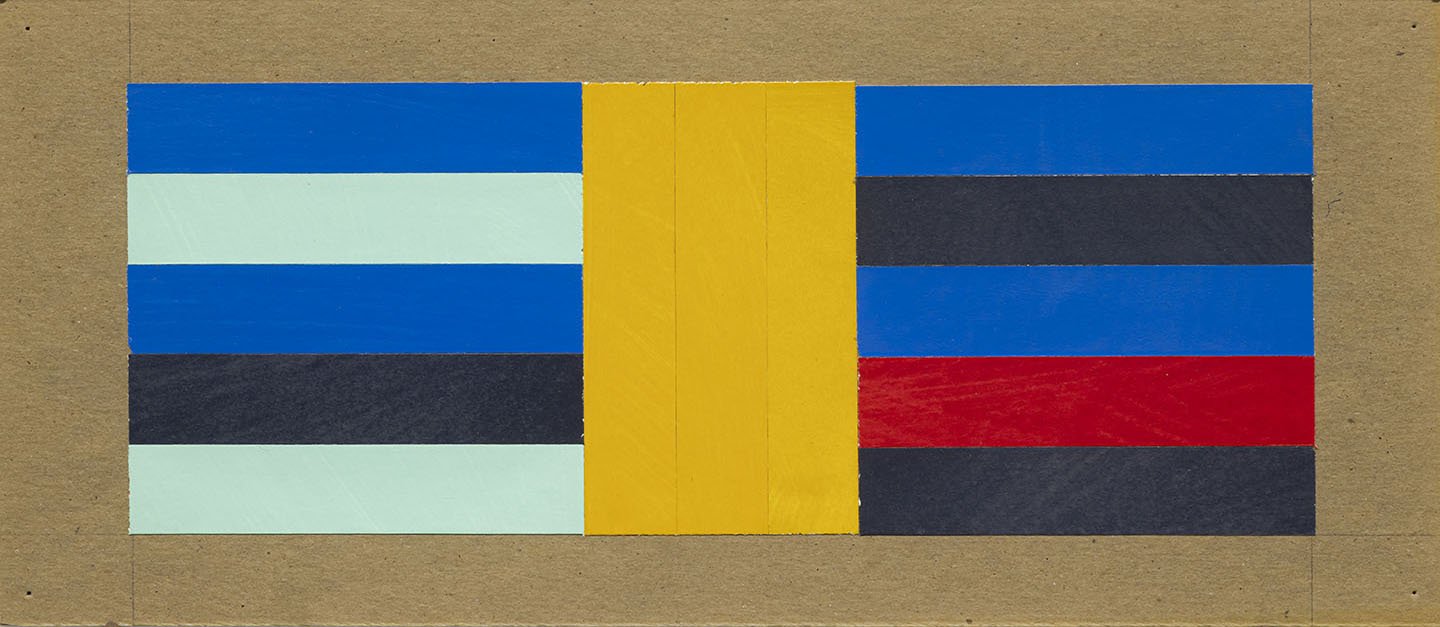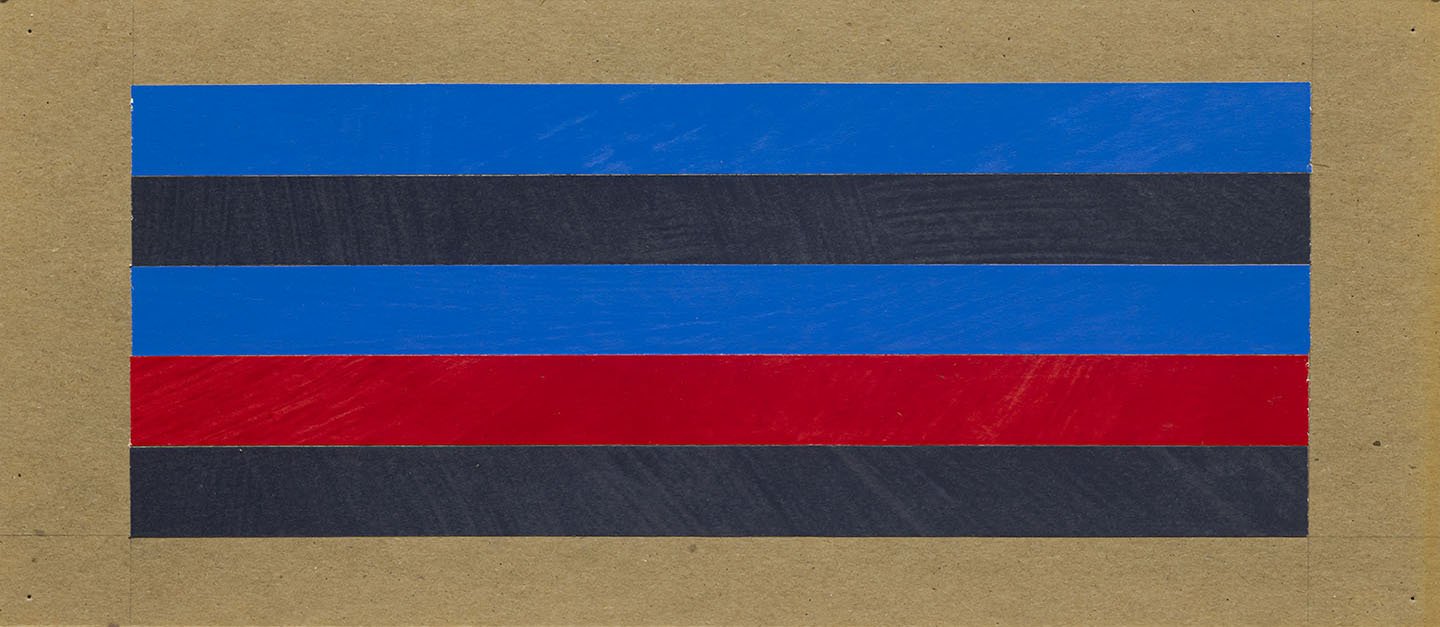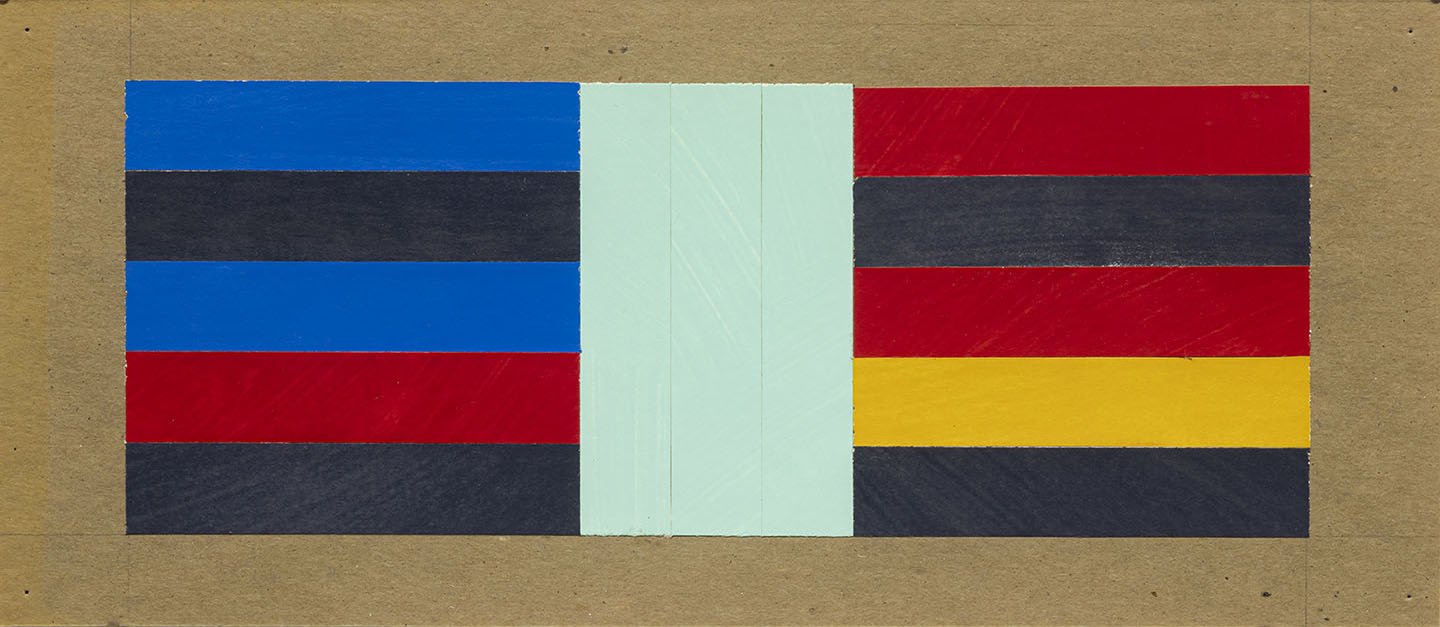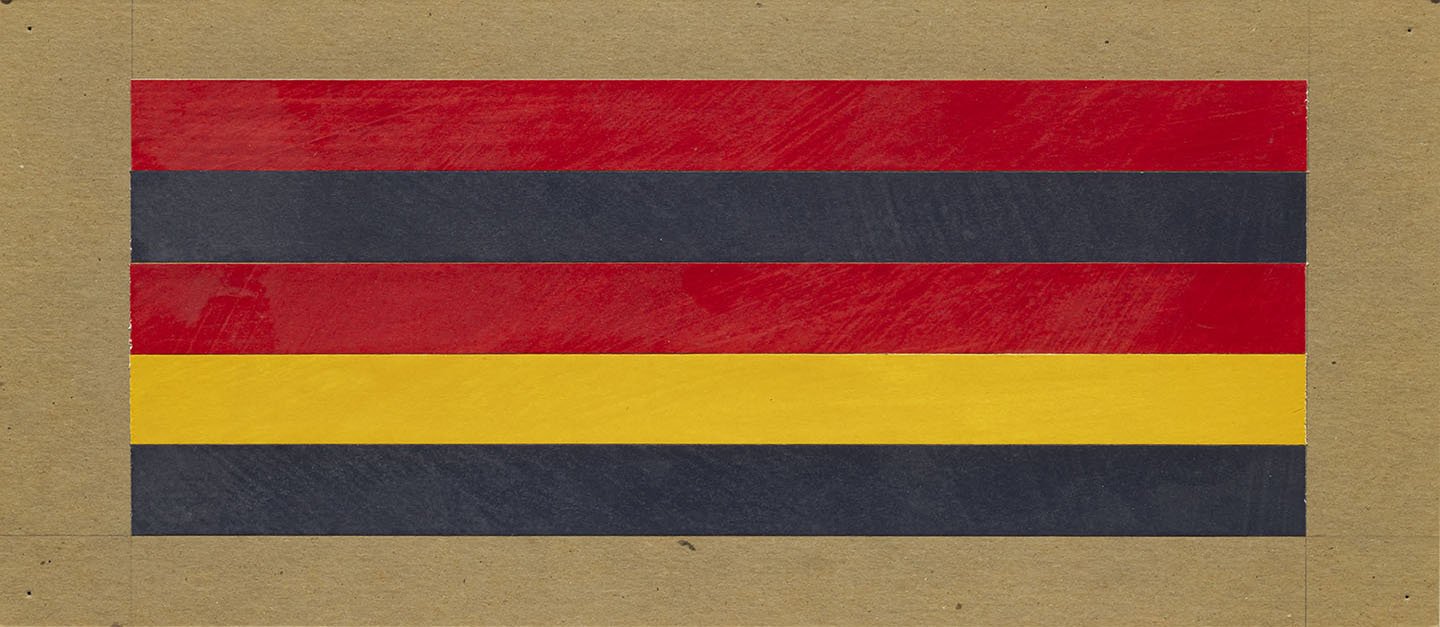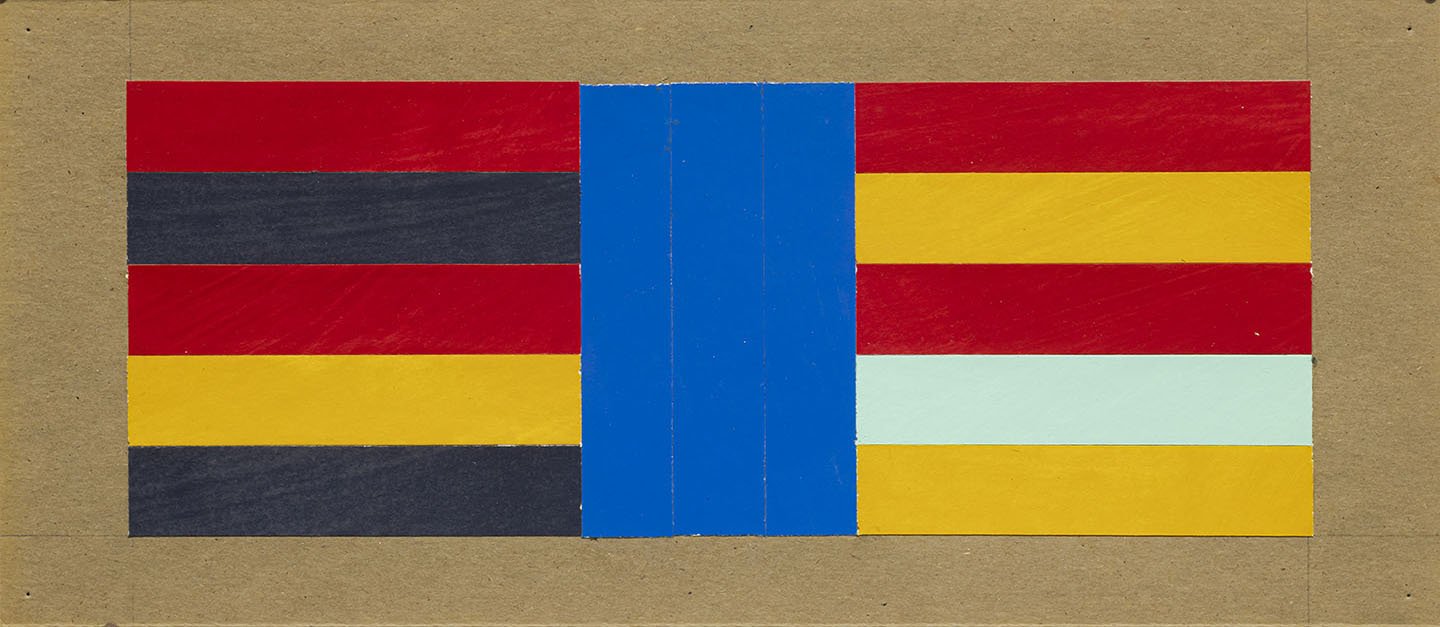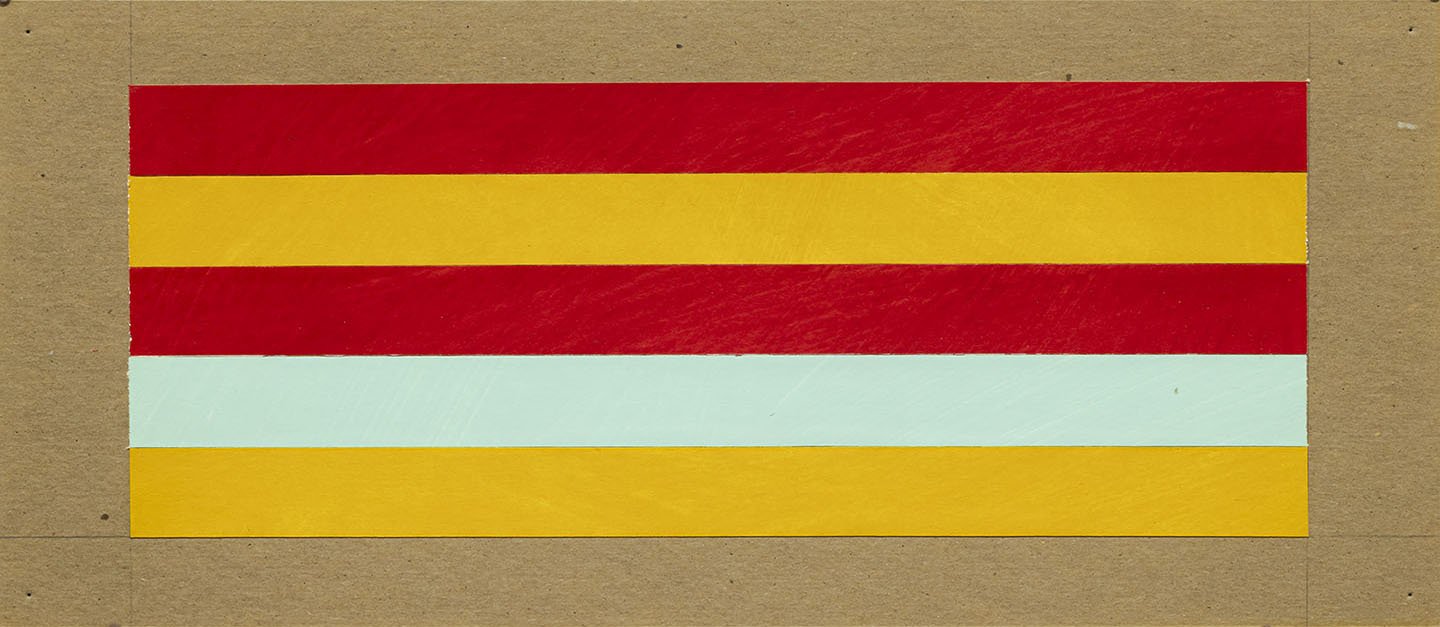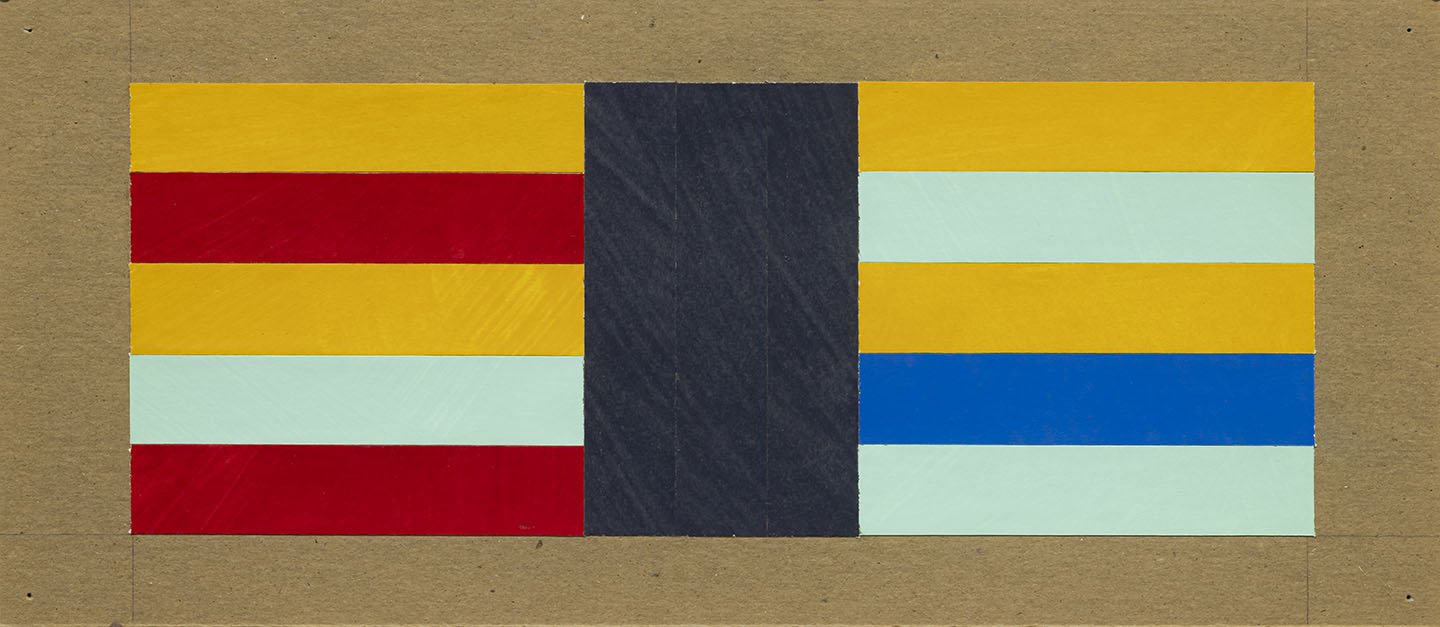Birch Contemporary presents two bodies of work from the celebrated Canadian artist Jaan Poldaas (1948-2018). Exhibiting for the first time, in the west gallery, the 12 paintings “2018" from the artist’s final series of a five-decades long career. In the east gallery, 20 small collages, from 1993-94, which are studies for a frieze in a subway station, a public art commission for the TTC that was unrealized.
Like all of the artist’s bodies of work, Poldaas creates a program of self-imposed rules to determine a work’s geometric and colour composition. In his book, Abstract Painting in Canada, Roald Nasgaard includes a section on Poldaas, in which he states, “Poldaas’ strategy has been to find objective and rational criteria by which to examine the function of colour, to deal with its materiality within conceptual frameworks and to subvert all tendencies towards subjective or decorative selection. “I have actively pursued an understanding of colour in a way that no other artist has to my knowledge, and this has not been devoted to mastery. To be a master you have to stop thinking about it.””
Jaan Poldaas often started his paintings with a prescription: “This is what I can say in words about what I am about to do.” However for the 2018 series, the artist did not leave behind such a note. Or it has not been discovered. This is explored in the limited-edition publication Jaan Poldaas: 2018 about the artist’s last series which launches at the opening. In the absence of an after-note, Ihor Holubizky explores in an essay the possibilities, not only within the 2018 painting series itself, but within the larger context of the artist's long career. Jessica Rose writes about decoding her stepfather’s work while archiving it in his absence, and the discovery she made while temporarily residing in her late parents former live-work apartment
The artist did write “in words what he was about to do” in a proposal to the TTC. The 20 collages are studies for a frieze. Each colour in the studies represents a mosaic of coloured tiles that were predetermined based on the cost codes of each tile. This means that a blue section in a panel of the frieze would be made up of a combination of 3 different colours of blue tiles according to a mathematical equation involving cost code averages pre-determined by the artist:
The frieze is a five-part stripe in three colours arranged ABACB.
In the middle of every second panel is a vertical bar three units wide which occasions a number of systematic changes in the stripe. A particular colour may start, stop, change or continue its path, or change in number.
A simple logic generates 10 variations in the stripe before repeating. This represents 20 panels or 2/3 of the length of the station. 60 different colour combinations are possible each combination has a unique visual character and associative potential.
About the Artist
Estonian Canadian painter Jaan Poldaas was born in Sweden in 1948 and raised in northern Ontario. Before becoming a painter, he studied architecture at the University of Toronto in the late 1960s.
Since the 1970’s, Poldaas was a major presence in the Toronto painting scene. He was a founding member of Mercer Union in 1979 and his work has exhibited widely is held in many public and private collections in Canada and abroad including the Art Gallery of Ontario and the National Gallery of Canada, National Gallery of Estonia, and the Albright-Knox Art Gallery.
Poldaas was a life-long practitioner of hard-edge abstract painting; his sophisticated and rigorous conceptualist and process-based ideology and his distinctive chromatic personae set him apart from his peers in the Canadian school.
Back to All Events
